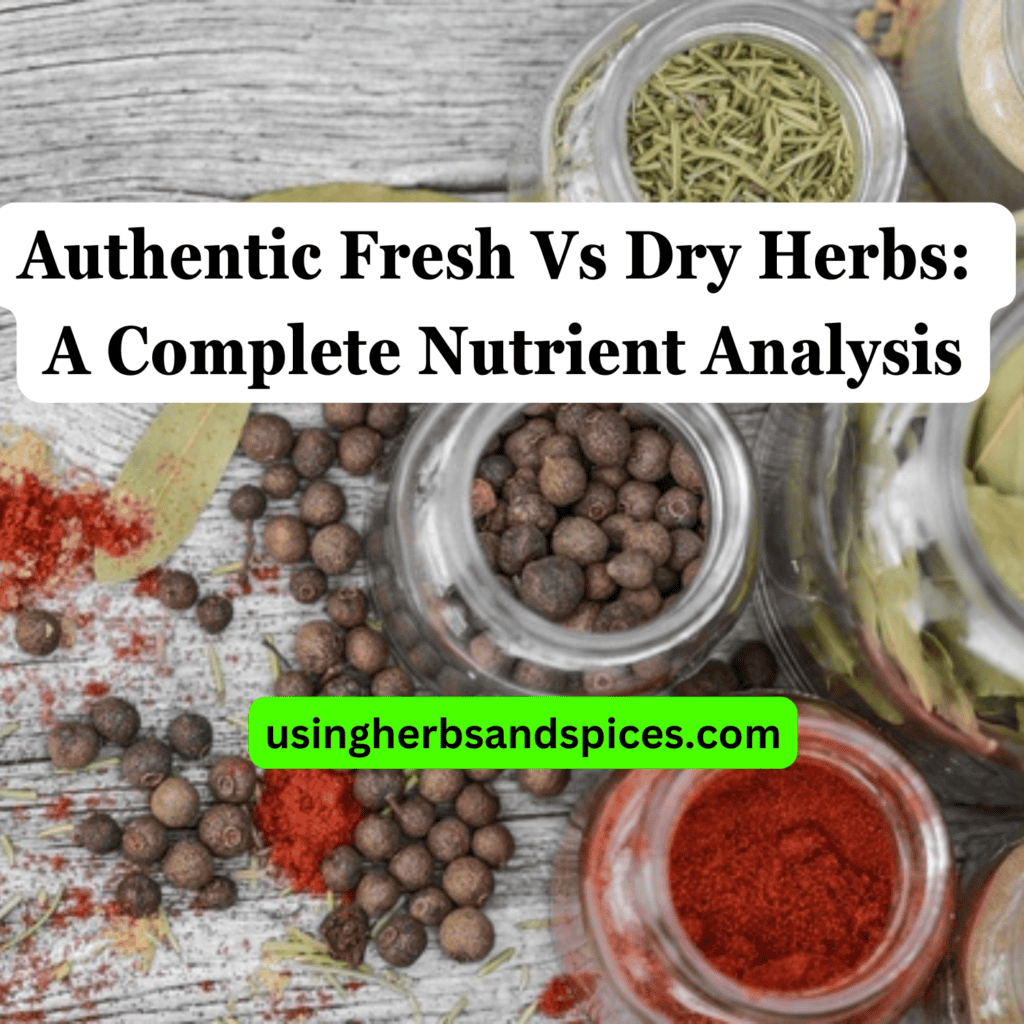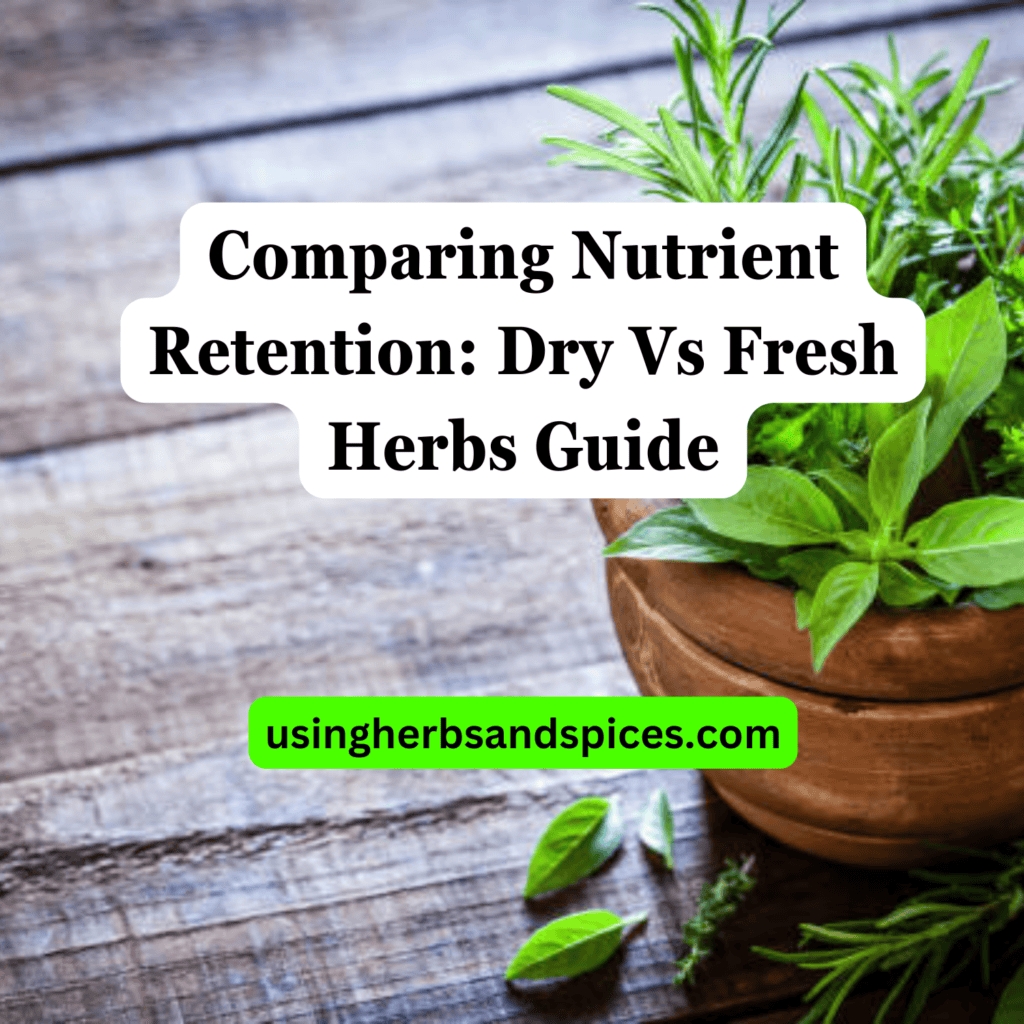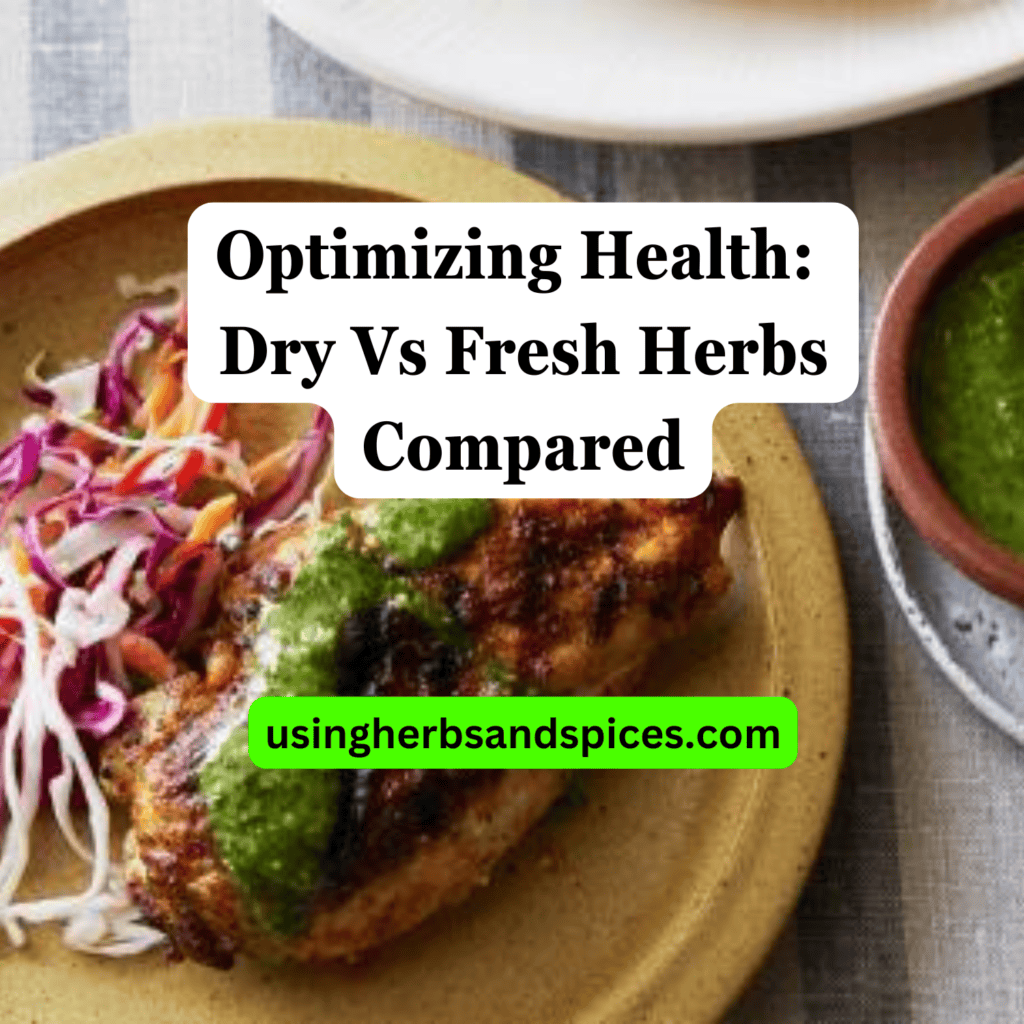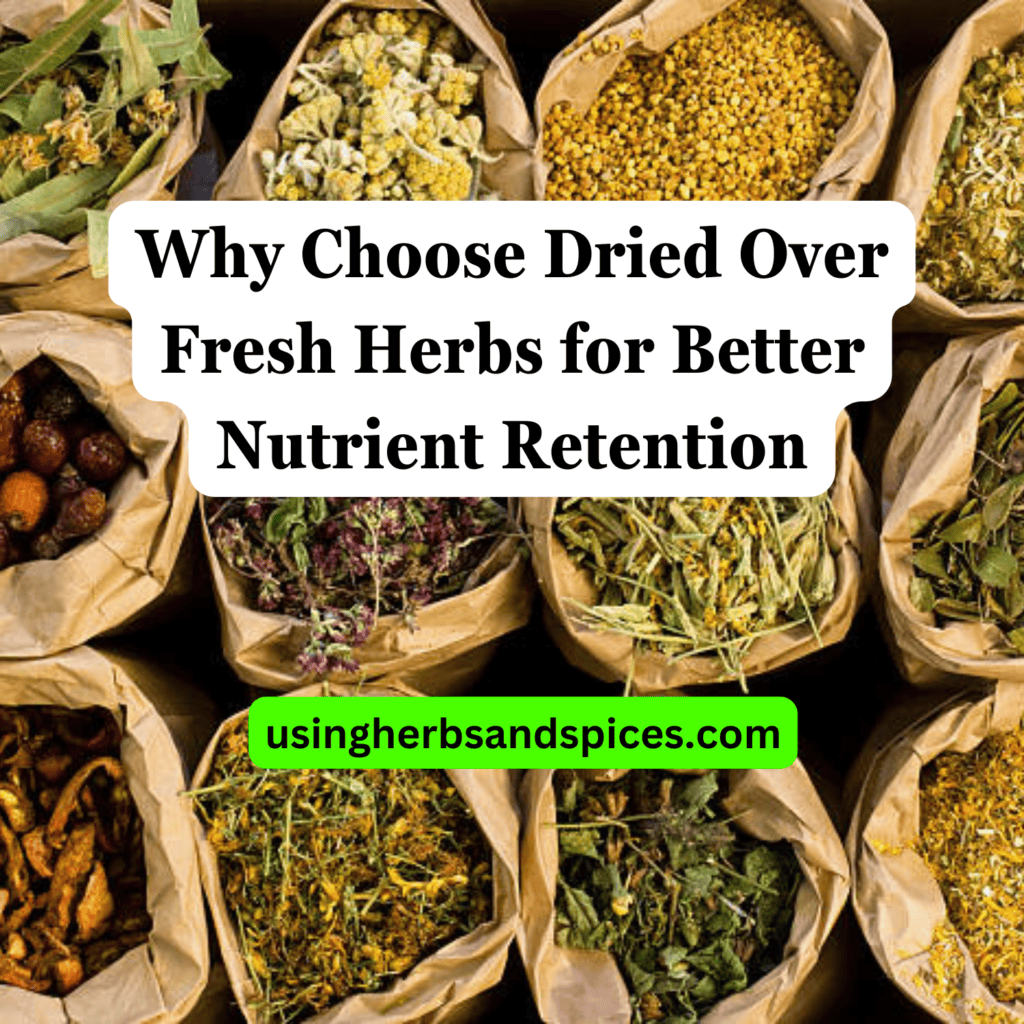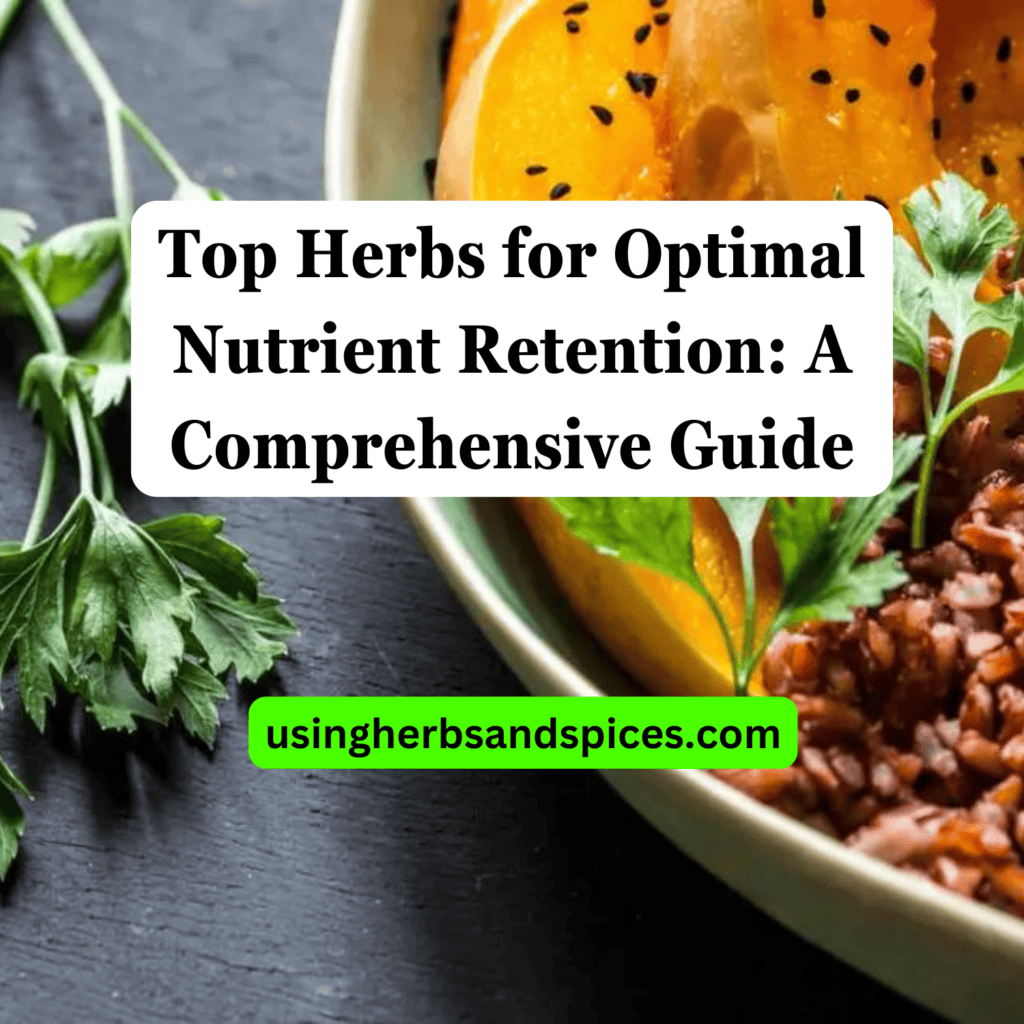SUMMARY: Dried herbs lose some nutrients in the drying process, especially water-soluble ones like vitamin C, but they still pack a concentrated flavor and can be stored longer. Use drying techniques that preserve the most nutrients to get the best out of herbs, whether dried or fresh.
Are you wondering if your choice between dried and fresh herbs impacts the nutritional value of your meals?
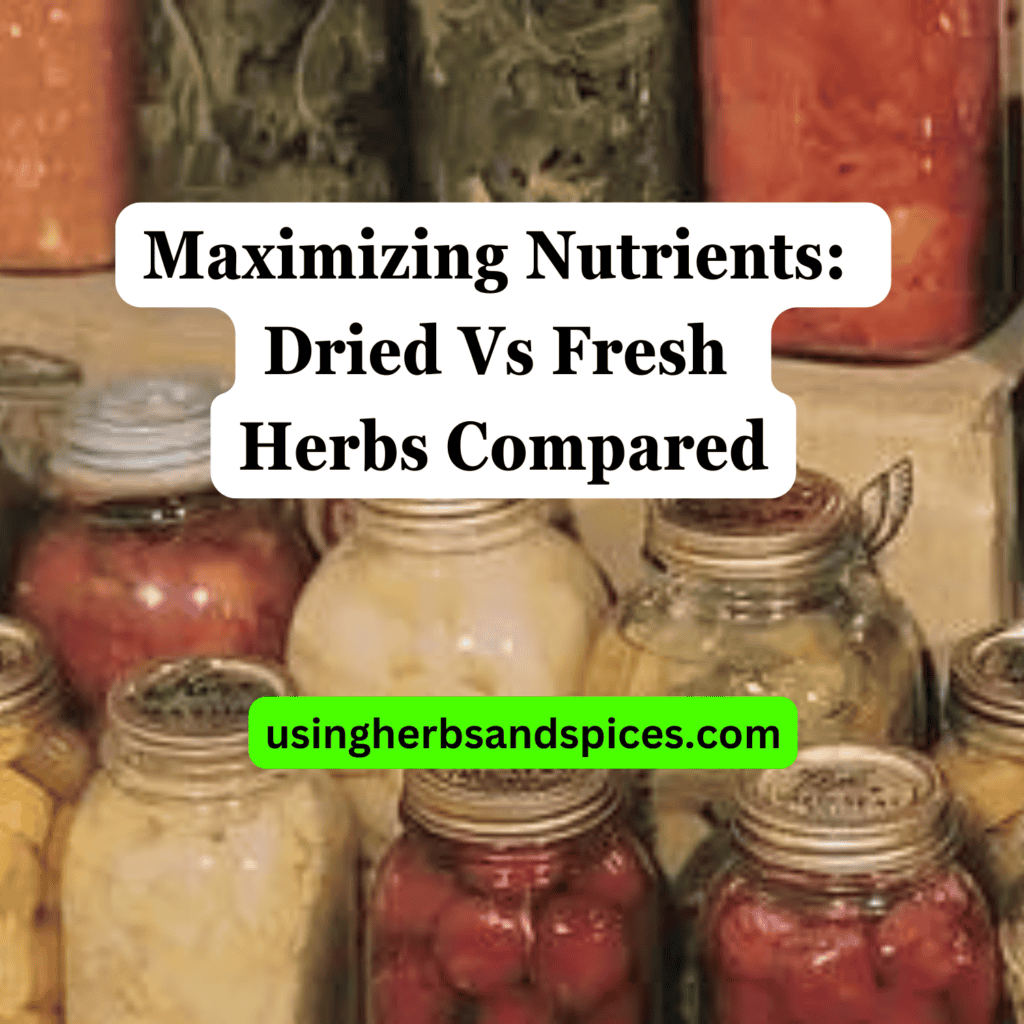
You’re not alone in seeking the best ways to maximize the health benefits of herbs.
- Understanding Nutrients in Herbs
- Do Dried Herbs Lose Nutrients?
- Maximizing Nutrient Retention in Dried Herbs
- Practical Tips for Using Herbs to Enhance Nutritional Intake
Continue reading to discover how to make informed choices about using herbs to boost your nutritional intake effectively.
Understanding Nutrients in Herbs
Herbs, whether fresh or dried, are more than just flavor enhancers; they are packed with vitamins, minerals, and antioxidants essential for good health. Fresh herbs like parsley, cilantro, and basil are known for their high levels of vitamins A, C, and K, as well as minerals such as iron and potassium. Dried herbs, on the other hand, provide more concentrated levels of nutrients per gram, making them a potent source of antioxidants which can protect against chronic diseases. However, the drying process can impact the potency of certain vitamins, especially those sensitive to light and heat. Thus, the choice between using fresh or dried herbs can affect the nutrient profile of your dishes significantly.
Do Dried Herbs Lose Nutrients?
When considering the health benefits of herbs, one common question arises: do dried herbs retain the same nutritional value as their fresh counterparts? The drying process, by necessity, removes water from the herbs. This concentration process means that dried herbs can often appear to have higher levels of nutrients by volume when compared directly with fresh herbs. However, the heat and time involved in drying can indeed lead to a decrease in some volatile compounds and vitamins, particularly those sensitive to heat, such as vitamin C and some B vitamins.
It’s important to understand the nuanced effects of drying on herbs. While some antioxidants remain stable and can even become more concentrated in dried herbs, other nutrients, especially those sensitive to air and light, might degrade over time. The method of drying plays a significant role in this outcome. For example, air-drying herbs in a dark, cool place can help preserve their oil and nutritional content better than drying them in direct sunlight or using high heat in a conventional oven.
Research indicates that the total phenolic content and antioxidant capacity can remain high in dried herbs, suggesting that these important plant compounds are relatively stable during the drying process. However, the key to maximizing these benefits lies in the drying method employed and the subsequent storage conditions. Therefore, when evaluating nutrient loss in dried versus fresh herbs, it’s essential to consider not just the immediate effects of drying but also how the herbs are handled post-drying.
Maximizing Nutrient Retention in Dried Herbs
To maintain the nutritional value of herbs while drying, it’s imperative to understand and apply certain best practices. Contrary to popular belief, with the right methods, dried herbs can retain a substantial amount of their nutrients. The following strategies are essential in maximizing nutrient retention:
- Choosing the Right Time to Harvest: Herbs should be harvested at the right time, usually in the morning after the dew has evaporated but before the sun is high. This is when the concentration of essential oils, and thus nutrient levels, are at their peak.
- Proper Drying Techniques: Although sun-drying is a popular method, it may not be the best for retaining nutrients. Using a food dehydrator or an oven on a low setting can more effectively preserve the herbs’ essential oils and nutrients. The key is to dry herbs at the lowest effective temperature.
- Avoiding Over-Drying: Over-drying not only diminishes flavor but can also deplete vitamins and minerals. Herbs are adequately dried when they are crisp and crumble upon bending, but not so dry they turn to dust.
- Storage: Once dried, herbs should be stored in airtight containers away from light and heat. Glass jars with tight-fitting lids in a cupboard are ideal. Properly stored, dried herbs can retain most of their nutrients for up to a year.
Applying these strategies ensures that the dried herbs you use in your cooking and teas retain as much of their original nutritional content as possible. Remember, the goal of drying herbs is not only to extend their shelf life but also to concentrate their flavors and preserve their healthful properties.
Practical Tips for Using Herbs to Enhance Nutritional Intake
Incorporating herbs, both dried and fresh, into your diet is a simple yet effective way to boost your nutrient intake. Here are practical tips to help you make the most out of these nutritional powerhouses:
- Vary Your Selection: Different herbs offer different nutrients and health benefits. For example, parsley is high in Vitamin K, while oregano is rich in antioxidants. By varying the herbs you use, you’ll get a broader range of nutrients.
- Use Generously in Cooking: Herbs can add depth and complexity to dishes without the need for extra salt or fat. Fresh herbs are best added towards the end of cooking to preserve their flavor and nutrients, while dried herbs can be added earlier to allow their flavors to meld with the dish.
- Incorporate into Beverages: Fresh mint can be infused in water for a refreshing drink, and dried chamomile makes for a soothing tea. These beverages can provide a gentle way to enjoy the benefits of herbs.
- Create Herb-Infused Oils and Vinegars: This is a great way to preserve herbs and is perfect for dressings or drizzling over cooked dishes. Plus, the oil or vinegar will extract and retain many of the nutrients from the herbs.
- Storing Fresh Herbs: To maximize their shelf life and nutrient content, fresh herbs should be stored properly. Trim the stems and place them in a glass of water, similar to a bouquet of flowers, then cover them with a plastic bag and refrigerate. This can extend their freshness and potency.
Remember, while fresh herbs tend to offer higher nutrient levels, dried herbs provide a more concentrated source of vitamins and minerals due to their reduced water content. Whether you opt for fresh or dried, make sure to include a variety of herbs in your diet to reap the maximum health benefits.
Preserving Nutritional Value
The exploration of the nuances between dried and fresh herbs has unveiled critical insights into preserving and maximizing their nutritional benefits.
- Herbs, whether fresh or dried, contain essential nutrients beneficial for health.
- The drying process, while convenient, can lead to a reduction in some nutrients, especially if not done correctly.
- Implementing best practices in drying herbs, such as low-temperature dehydration, can significantly preserve their nutritional value.
- Incorporating both dried and fresh herbs into your diet can enhance flavor and contribute positively to your nutritional intake, with each form offering its unique advantages.
- Understanding the proper storage and usage of herbs is key to maximizing their nutritional potential and obtaining the most health benefits.
Ultimately, the choice between dried and fresh herbs should be informed by an understanding of their nutritional profiles, the constraints of shelf life, and the specific requirements of the recipes they enrich. Both forms have a valued place in the kitchen and can contribute to a well-rounded, nutritious diet.
Maximizing Nutrients in Dried Vs Fresh Herbs FAQs
Are dried herbs as nutritious as fresh herbs?
Dried herbs can be almost as nutritious as fresh herbs, but they may lose some of their nutrients during the drying process. This varies depending on the herb and the drying method used. However, drying herbs concentrates their flavors and, in some cases, nutrients, making them more potent when used in cooking.
How should dried herbs be stored to preserve their nutrients?
To preserve their nutrients, dried herbs should be stored in a cool, dark, and dry place. Airtight containers are best to keep out moisture and prevent the degradation of their aromatic oils and nutrients. Proper storage can significantly extend their shelf life while maintaining their nutritional benefits.
Can the loss of nutrients in dried herbs be minimized?
The loss of nutrients in dried herbs can be minimized by using low-temperature drying methods, such as air drying or using a dehydrator set to a low setting. Quick, high-heat methods can destroy sensitive vitamins and antioxidants, so gentle drying is key to nutrient retention.
Is there a significant difference in the flavor of dried versus fresh herbs?
Yes, there is a significant difference in flavor between dried and fresh herbs. Dried herbs tend to have a more concentrated, intense flavor due to the loss of water during the drying process. It’s often recommended to use a smaller quantity of dried herbs when substituting for fresh to avoid overpowering a dish.
What are the best practices for using fresh herbs to ensure maximum nutrient intake?
To ensure maximum nutrient intake from fresh herbs, use them as close to the serving or cooking time as possible. Exposure to air, light, and heat can lead to nutrient loss, so storing them properly and adding them to dishes at the last moment can help preserve their benefits. Also, incorporating fresh herbs in raw form, like in salads or garnishes, can maximize their nutritional value.

